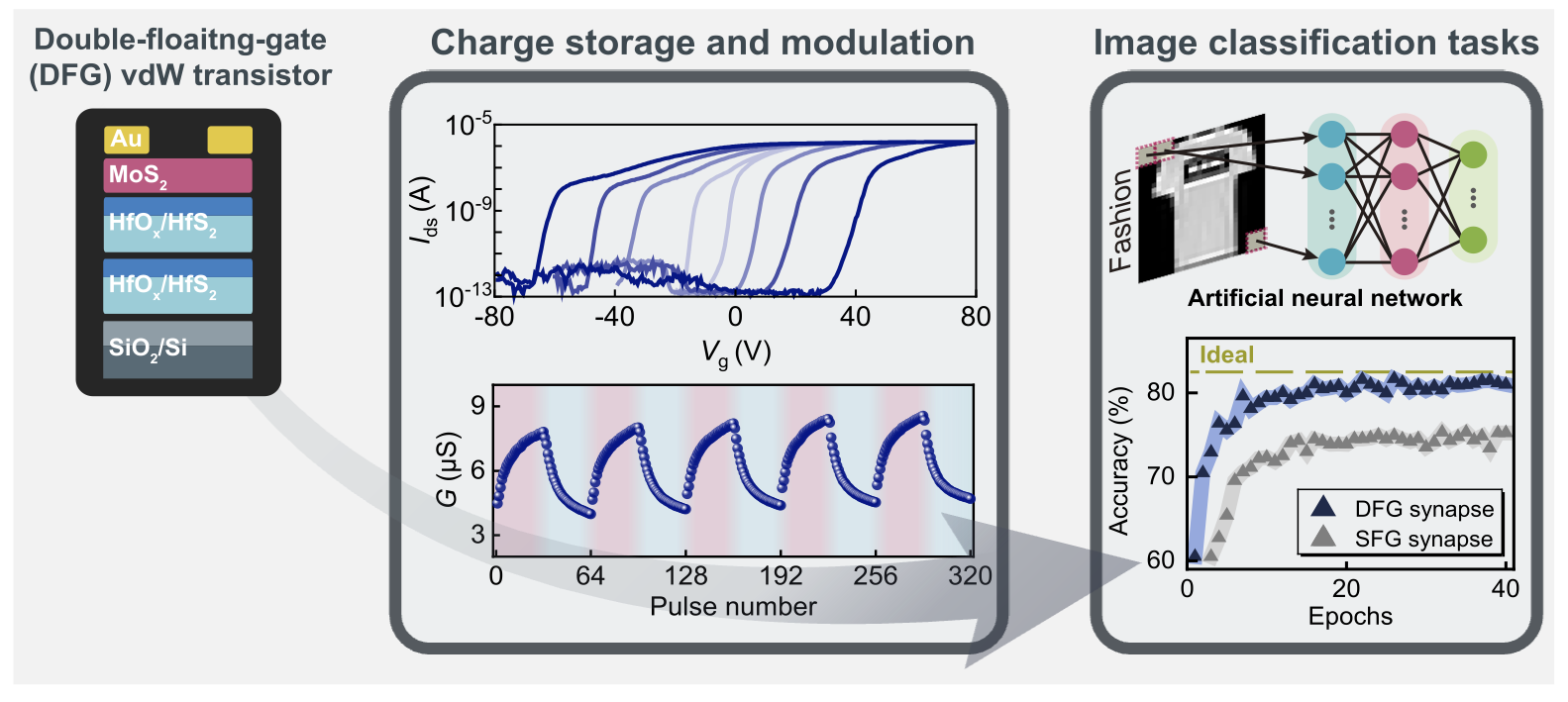Led by Professor Jonki Suh (Graduate School of Semiconductors Materials and Devices Engineering, Department of Materials Science and Engineering), a research team from UNIST has developed a double-floating-gate semiconductor device that accurately mimics brain functions based on two-dimensional materials.
Traditional computing systems operate sequentially and consume high power with increasing complexity and devices per circuit. In contrast, the human brain processes complex data using 100 billion neurons interconnected by 100 trillion synapses in parallel at less than 20 W of power.
With recent advancements in artificial intelligence and natural language learning, there is an urgent need for synaptic devices and neuromorphic computing systems emulating the human brain to process vast and complex images. Implementing such devices requires simulation of analog signals that change continuously over time instead of simple digital binary signals ‘0’ or ‘1’. However, existing semiconductor devices have limitations in simulating these analog signals with accuracy and reproducibility.
The research team has developed a double floating-gate artificial synapse device using two-dimensional materials that accurately simulate brain functions. The device distributes and stores charges by configuring double floating gates, which offer higher charge storage capacity and reliability compared to existing devices. Initial experiments demonstrated accurate simulation of brain behavior.
To achieve this, the team utilized atomic-thin two-dimensional materials with no surface defects to construct the double floating-gate device. Floating gates store data, but existing single-floating-gate devices have limited reliability and reproducibility due to storing large amounts of charge in only one gate.

Figure 1. Systematic image illlustrates the Synaptic Characteristics Simulation, using DFG vdW transistor.
The research team has developed a double floating-gate artificial synapse device using two-dimensional materials that accurately simulate brain functions. The device distributes and stores charges by configuring double floating gates, which offer higher charge storage capacity and reliability compared to existing devices. Initial experiments demonstrated accurate simulation of brain behavior.
To achieve this, the team utilized atomic-thin two-dimensional materials with no surface defects to construct the double floating-gate device. Floating gates store data, but existing single-floating-gate devices have limited reliability and reproducibility due to storing large amounts of charge in only one gate.
“Through this study, we have successfully implemented 2D material-based DFG device that accurately mimics brain functions and can be used in artificial neural networks (ANNs),” stated Researcher Hoyeon Cho, the first author of this study.
Professor Suh emphasized the significance of their research in designing a high-efficiency neuromorphic device structure based on unique advantages of two-dimensional semiconductors. They aim to contribute to developing semiconductor devices for artificial intelligence using new materials and novel devices.
The research findings have been published in the April 2023 issue of ACS Nano, a renowned journal in the field of Nano Science. The study was supported by the National R&D Program through the National Research Foundation of Korea (NRF) funded by the Ministry of Science and ICT. This work was also partially supported by the research project fund of UNIST.
Journal Reference
Hoyeon Cho, Donghyun Lee, Kyungmin Ko, et al., “Double-Floating-Gate van der Waals Transistor for High-Precision Synaptic Operations,” ACS Nano, (2023).













